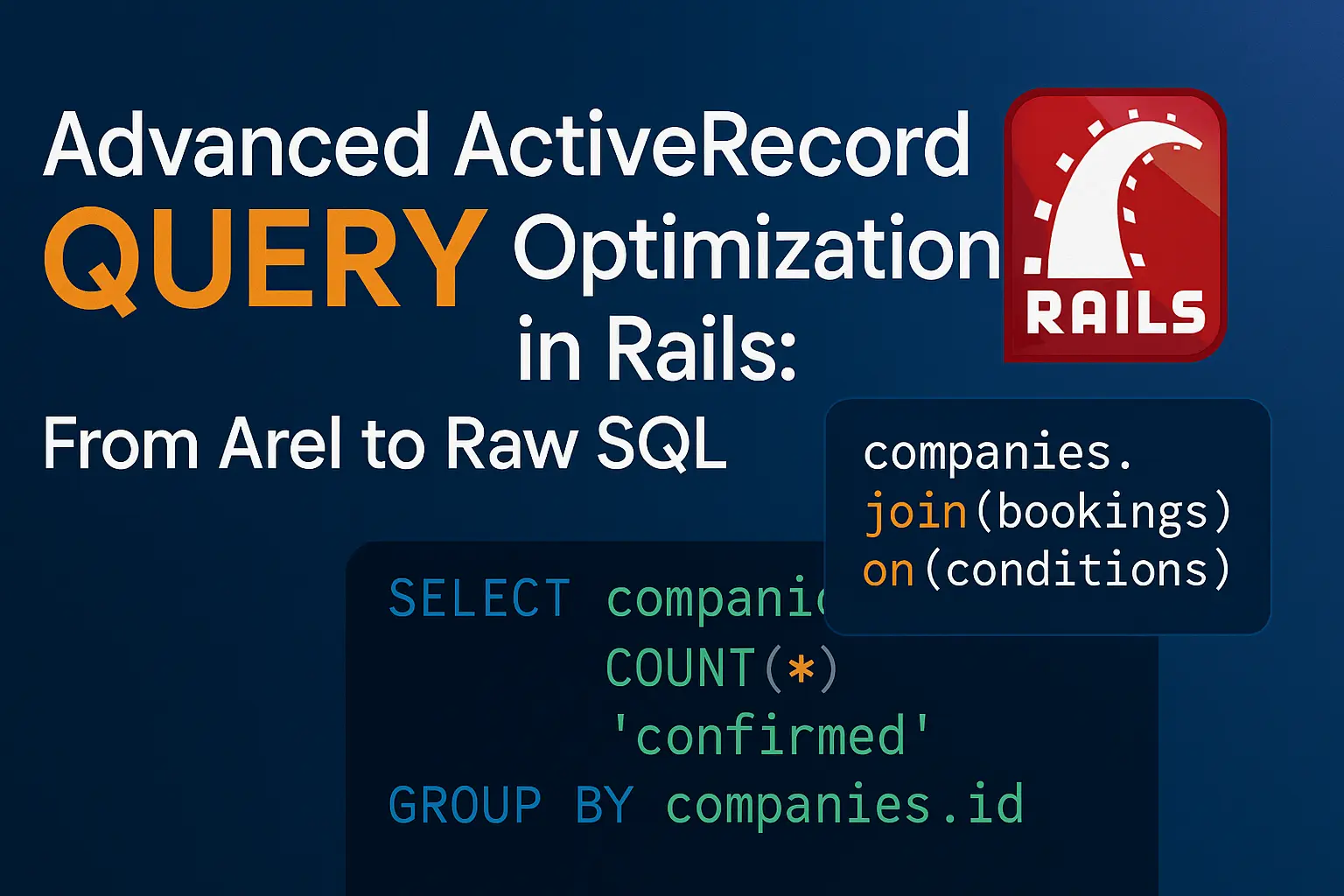Exploring the Latest Web Technology Trends and Innovations
Advanced ActiveRecord Query Optimization in Rails: From Arel to Raw SQL
ActiveRecord is one of Rails’ greatest strengths — but when your queries get complex or performance becomes critical, knowing how to go beyond the basics is essential. In this article, we’ll explore how to push ActiveRecord to its limits, when to leverage Arel for fine-grained query building, and when raw SQL is the best tool for the job.
Read MoreSorbet in Rails: Your Bug Radar Before Production Hits
Ruby is expressive, fun, and fast to write. But it's also... wild. With great freedom comes the risk of accidentally breaking things. Sorbet brings some guardrails to your Rails app. It’s a static type checker built just for Ruby — and this post is your beginner-friendly map to using it effectively in a Rails app.
Read MoreWhen Rows Don’t Die: MVCC, Index Bloat & How PostgreSQL Stores Your Data
PostgreSQL doesn’t just update rows — it leaves the old ones lying around like forgotten leftovers. It’s called MVCC, and while it’s great for concurrency, it can make your indexes bloated and your queries slow. This blog walks through what really happens inside your DB, how to spot bloat, and what to do about it.
Read MorePostgreSQL EXPLAIN ANALYZE: Decode Your Query Performance Like a Pro
EXPLAIN ANALYZE in PostgreSQL is like turning on X-ray vision for your queries. It lets you peek under the hood of your SQL to see what the planner thinks *and* what actually happened. Whether you're fighting slow queries or just flexing your database muscles, mastering EXPLAIN ANALYZE can save you hours of debugging and boost app performance.
Read MoreUnderstanding PostgreSQL MVCC: How Postgres Handles Concurrency Gracefully
MVCC (Multi-Version Concurrency Control) is the backbone of PostgreSQL’s concurrency model. Unlike locking mechanisms that stall readers or writers, MVCC allows multiple transactions to access the database simultaneously without stepping on each other’s toes. This blog dives deep into how PostgreSQL achieves this magic, what snapshots and visibility maps are, and how vacuuming keeps things in check.
Read MoreA Guide to Using Sidekiq for Background Jobs in Ruby on Rails
As web applications grow, they often need to handle long-running tasks without slowing down user interactions. Sidekiq is a popular choice among Ruby on Rails developers for processing background jobs efficiently. This guide will cover what Sidekiq is, how to set it up in a Rails application, and provide practical examples to illustrate its usage.
Read MoreRuby Builder Pattern: A Step-by-Step Guide to Creating Complex Objects
When writing code, we all face a common issue of creating complex objects with many possible configuration options. This can be a daunting task, especially if we need to create these objects in a consistent and error-prone. It is where the pattern comes into play. The Builder pattern is a design pattern that can help us to solve this problem. It allows us to create complex objects step by step, and it provides a clear and concise way to structure our code. In this article, we will take a look at how to implement the Builder pattern in Ruby on Rails. We will also discuss the benefits of using the Builder pattern and when you should use it in your own code.
Read MoreNext.js vs Vue, Angular, Go, and Ruby on Rails: Which Framework is Right for You?
In the fast-paced world of web development, the choice of framework can be critical. Next.js has emerged as a strong competitor, revolutionizing the way we build web applications. Next.js has had a transformative impact on the world of web development. With the recent release of Next.js 13, there are several new features and enhancements that web developers should be aware of. This blog explores the world of Next.js, comparing it to other prominent frameworks.
Read More






